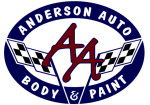Buying a new car has pitfalls of its own, including the massive depreciation that occurs just seconds after you sign the paperwork and the constant worrying about getting that first scratch or door ding. Buying a used car makes a lot of sense. Your costs across the board will be lower and more manageable and you’ll have a better chance at getting the kind of vehicle you really want by reigning in your expectations of how far your dollar will go.
When you are ready to go shopping, here are some used car buying tips that will help you navigate the world of used vehicles. Always check the following:
- The vehicle’s history – Find out as much as you can about how many owners the car has had and if it has been involved in any major collisions. The VIN (vehicle identification number) is the key to finding useful information about the vehicle because this number will be recorded on accident reports filed by police.
- Mileage – Low mileage doesn’t necessarily mean that a car is in good condition. It may have low miles because it has been neglected. Look for a car that has been well-maintained even if it has slightly higher mileage.
- The frame – Be sure that the doors and trunk open and close easily. If the vehicle isn’t on a paved surface, an uneven surface could be hiding the fact that the car’s frame isn’t even. Ask to have it moved to a paved level surface for further inspection.
- Under the hood – It should be fairly easy to identify evidence of fluid leaks, corrosion, and worn belts and hoses. Check the oil and transmission fluid to be sure that they are not discolored. Light brown oil and red/pink transmission fluid are normal.
- Tires – The tires on a used car might show some wear, and that’s to be expected, but if there are any signs of uneven wear, it could indicate that the vehicle is poorly aligned. The resulting frame, steering, and suspension issues could be very costly and not worth paying to repair.
- Cosmetics – Look at the condition of the upholstery, the floor mats, and the interior of the car. Investigate any odd smells in case it might not be possible to eliminate them. On the outside, examine the car for dents, scratches, rust, and any places where the paint doesn’t match. Small rust patches may be fixable but don’t trust a car that has any rusted-through areas.
- Comfort – Regardless of the appearance of the interior, be sure that the seats are comfortable and that you will be able to stay alert and calm while driving. Run the heat, air conditioning, and other features like heated seats and media players to see that they work properly and aren’t in need of repair.
- How it handles – A reputable dealership will allow you to take the car for a test drive. Pay attention to anything unusual like engine knocks or squealing brakes and also to how you feel while driving the car. If you don’t feel confident or in control, it might be time to try another vehicle.
If you think you’ve found the right car for you but it has some body damage, scratched or faded paint, or other cosmetic issues, those things shouldn’t stop you from buying the car. The experts at your local auto body shop can repair those minor details and get your car looking its best.
With more than 30 years of experience, Anderson Auto Body & Paint provides a full range of auto body and paint services performed by trained technicians who are ASE, I-CAR, and Fusor certified. We are also a PPG certified collision repair center. Contact us today to learn more about our services or to schedule an appointment.




Recent Comments